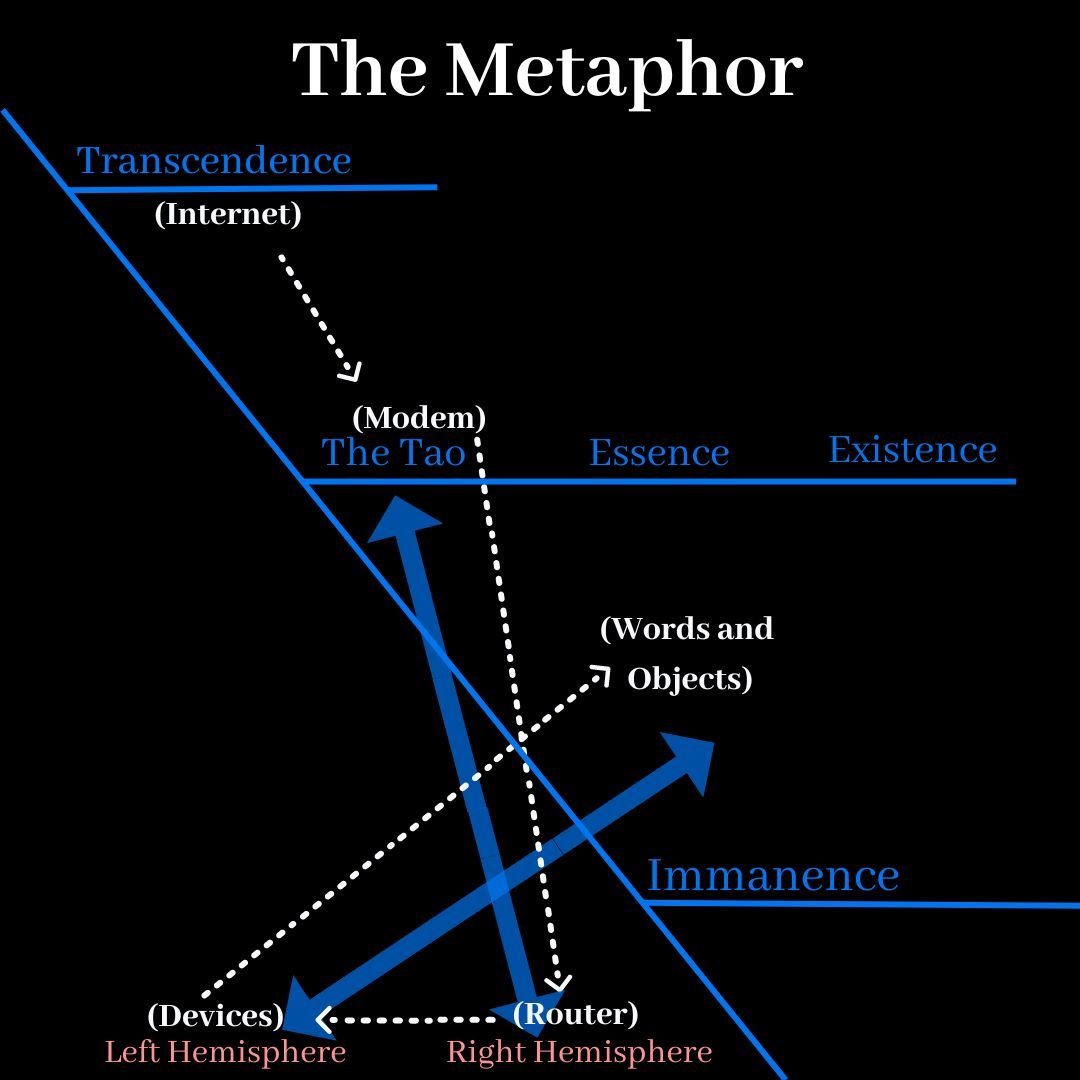The Metaphor: Transcendence-Tao-RH-LH

Our connection to reality is kind of like our connection to the Internet. The Internet Metaphor is marked in white.
Transcendence: Internet
Tao: Modem
Right Hemisphere: Router
Left Hemisphere: Devices that Let Us Enjoy the Internet

Now look at modern culture's tendency to disconnect from The Reality Spectrum. Only the router (right hemisphere) fails: the devices/hard drive (left hemisphere) continue to work. As a result, Transcendence and the Tao are there and we are there: we just aren't connected because the right hemisphere is impaired (weakened and atrophied from neglect and abuse (in the form of left hemisphere belittlement of what the right hemisphere does)).
McGilchrist
The point of the Metaphor is to tie the Hemisphere Hypothesis to the Existence Strikes Back project. It scarcely touches on the Hemisphere Hypothesis itself, which explains the relationship (the "lateralization") between the left hemisphere and the right hemisphere. Moreover, McGilchrist scarcely touches on the Tao and Transcendence, things that firmly veer toward religious themes, which are things that interest McGilchrist but more as "side lights" than points of emphasis. He, it seems to me, is very "William Jamesish" in this regard.
Still, it's worth noting that McGilchrist would probably assert that the Metaphor's 10,000-foot overview of the hemispheres' connection to the world of words and objects obfuscates more than clarifies.
He extensively documents and explains that the right hemisphere receives input from the external world, feeds it to the left hemisphere for processing, and then receives a response from the left hemisphere.
He would, accordingly, probably make the bottom horizontal white line into a double arrow, with the arrow back to the right hemisphere then shooting into the world of words and devices.
Material from the real world as presencing to the right hemisphere is fed into a largely closed system, that of the left hemisphere, with its own rules and procedures, and then emerges to be reinterpreted in the real world once more, by the right hemisphere. The Matter with Things, p. 373
More
There are prima facie reasons to suppose that an understanding of the divine is sustained largely by the right hemisphere.
The right hemisphere is better at accepting uncertainty and limits to knowledge. An understanding of the divine must rely on indirect and metaphorical expression, not direct and literal expression; it must tolerate ambiguity; and it has to be at ease with accepting that both of what, on the surface, appear to be contradictory elements might be true – in other words, it must be receptive to what we call paradox. . . . It involves appreciating a Gestalt, not a construction of parts; entering into an ‘I–Thou’, not just an ‘I–It’ relationship, with its subject; sustaining emotional depth; and seeing that spirit and body are not distinct, or opposed, but discernibly different aspects of the same being. In epistemological terms, it requires knowing in the sense of kennen more than wissen; valuing ‘active receptivity’, as well as not doing and not knowing. It involves sustaining attention, and stilling the inner voice, as in prayer and meditation. The Matter with Things, 1211-1212
